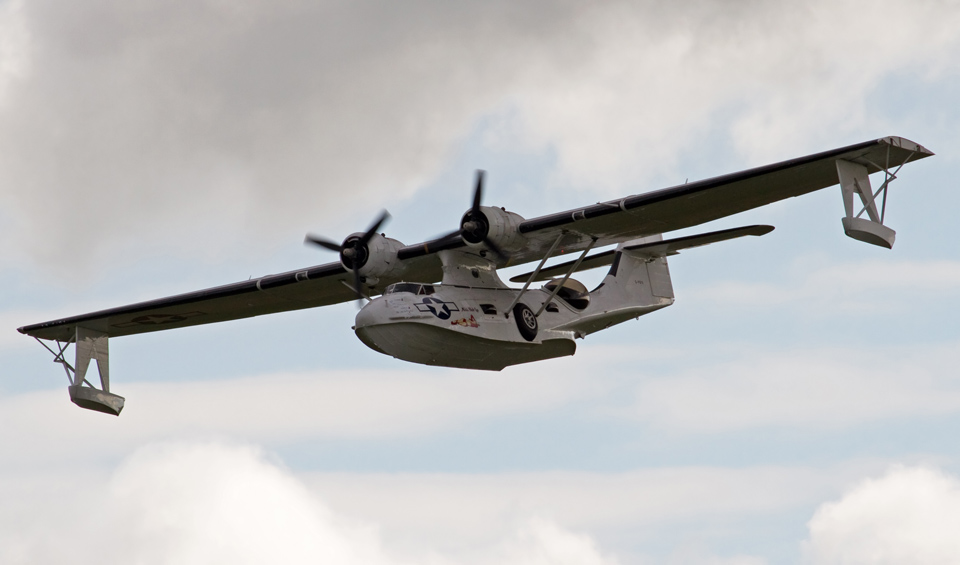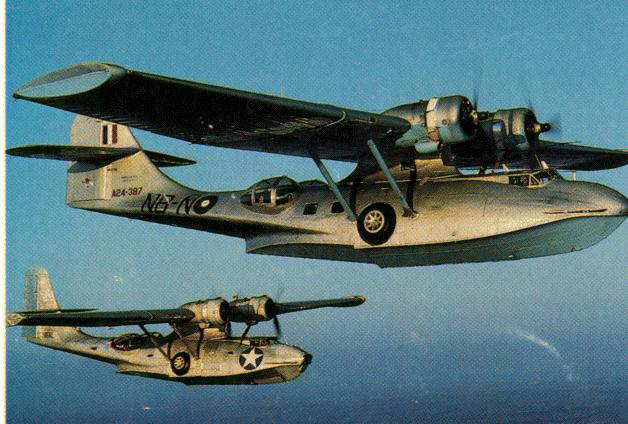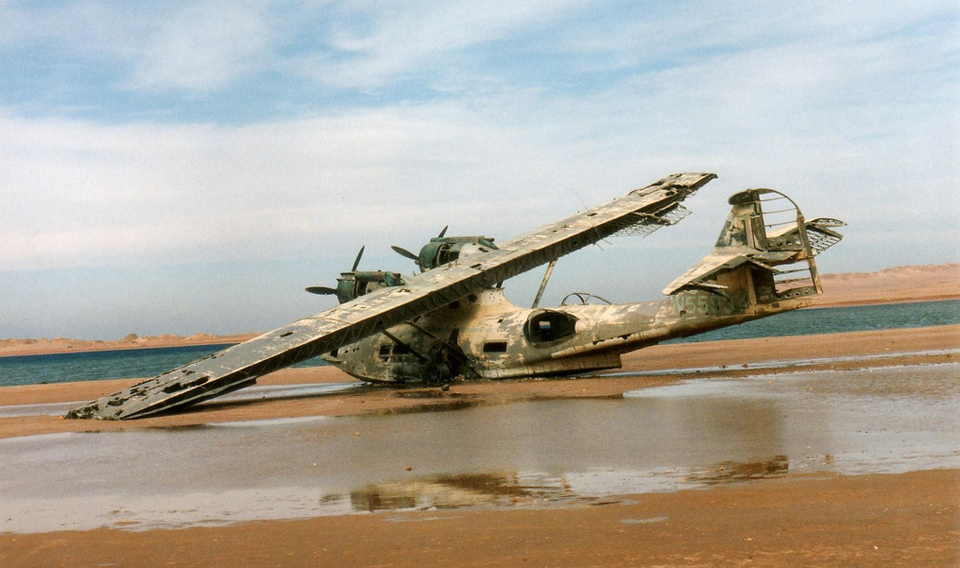PBY Catalina
November 2015 - The destruction of PBY N85U earlier in the year spawned some research into the health of the PBY population worldwide, and perhaps a discussion of one of the most important aircraft of WWII. The PBY was present throughout the entire conflict and, prewar, was as important to the U.S. Navy as the B-17 was to the Army Air Corps. Our isolationist policies depended on long-range patrol bombers to extend the detection zone far over the horizon.
The PBY had an endurance of about 20 hours, and flew many massed record flights to demonstrate the reach of the airplane before hostilities began. Before U.S. involvement in WWII, 200 PBY seaplanes were purchased by the British Purchasing Commission, and deliveries began by early 1941. An American exchange copilot was flying aboard 209 Squadron’s AH545 when, on May 26, 1941, that copilot spotted the wounded battleship Bismarck and began the final part of a chase that had electrified the world. The flak-damaged PBY landed safely after an 18-hour mission! Before the war began, a patrolling U.S. Navy PBY attacked a submarine before the Pearl Harbor attack, just outside the harbor, firing one of the first shots of the war not yet declared.
A PBY discovered the Japanese Fleet moving on Midway in June 1942, and allowed U.S. Navy planners a vital first shot in the battle that turned the war against Japan. The PBY Dumbo mission rescued countless fliers, seamen, and survivors throughout the war, and is most notable for saving lives, although the “black cat” and other mission aircraft were just as deadly as any other. The plane was useful, leaving U.S. Navy service in January 1957 and serving 21 years. Still with plenty of life in the airframe, military PBYs finally mustered out of service in 1979 when Brazil parked its long-serving amphibians.
With a long civilian career and airline use besides, few PBYs survived the 70 years of service demanded of them. Today, perhaps 80 exist in one state or another. Fewer fly and some of the existing 80 are projects. As for fliers, there are fewer than 10, although some can be made airworthy in a short time.
PBYs were built in several locations and by several manufacturers. Today, they exist in the PBY-5A configuration and the later “tall tail” PBY-6A variant. Both are amphibians, which accounted for half of the PBY production – the other half were “flying boats” and did not have any landing gear at all. There are only two surviving pure boat PBY-5s in the United States, both owned by the U.S. Navy.
Each PBY is different, and while there are a few to choose from, a PBY requires a dedicated crew and a thorough going-through before even attempting to do water work. Two of the nicest PBYs still are hangared with Connie Edwards in Texas, and he graciously brought one to AirVenture a few years ago. Obtaining one is a bit of a problem, as there aren’t many offered for sale in great condition. While the prices paid have been low, there has not been a perfectly restored warbird PBY sold on the open market. Ever. The elusive N206M is a good candidate for the title of best out there, as potentially good aircraft are the ones owned by Jerry Yagen and Jack Erickson.
Time will tell, but the number of restorable and active PBYs is small. In Victoria, Canada, at the old location of the RCAF Patricia Bay station, Canso CF-UAW is being restored to both train and continue the legacy of flying the legendary seaplane. They plan on being up and running soon, so take a look and see what you may be missing. The PBY is a most important but undervalued and overlooked aircraft. With the loss of several airframes in the last few years, it is apparent the market has not discovered the PBY yet. Here is to hoping they become a little more recognized for the vital role they played.
Read more about The Catalina Preservation Society.


